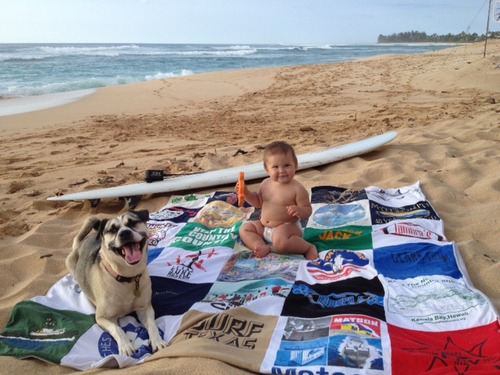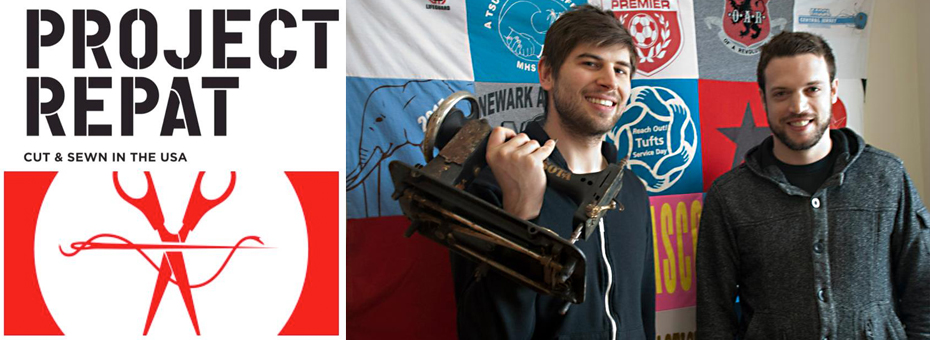When I tell people, “At Project Repat, we turn people’s t-shirts into new products like t-shirt blankets,” they often respond, “Oh my aunt does that.” So I’ve started to think of my business in coffee shop terms. When a new coffee shop opens, nobody says, “Oh, I’ve heard of that, I know someone who sells coffee.” Everyone can make a cup of coffee at home, but why do people go and spend more in a public space? They enjoy the community, the convenience, and the comfort of being in a space with others reading, writing, and interacting. It’s not the idea of a coffee shop that holds weight, it’s the customer experience that matters.
What makes our business work when your aunt can make you a t-shirt blanket, too? It probably takes a long time for your aunt to make a single quilt. It takes time to cut and attach the batting, and the quilting of the stretchy cotton and batting is not an easy task. All of your t-shirts have to stay in place, and they can’t be mixed up with any item that doesn’t belong to you. Maybe your aunt finally delivers your blanket a year later, and it’s beautiful. But in the age of Amazon, when anything can be delivered to your doorstep in less than 24 hours, people want a top quality product at the distance of one click away. That’s where we come in.
We originally thought our customers wanted random t-shirts as tote bags and circle scarves, but we were wrong. How did we know this? When we attempted to sell these products at local markets, customers instead asked us, “What can you do with my t-shirts?” It turned out that it didn’t matter to customers where we were making our product, if it cost more than what they were used to paying, or if it came from a brand name they trusted. What we realized was this: the only way to get people to buy our product was to make it their product. It was only then that we discovered something that disrupted the space.

What space? Sure, it’s funny to say, but we disrupted the “t-shirt quilt” space. We didn’t add any new technology, we simplified things. At first, we tried it the way your aunt makes it, but that took forever. While we failed to create a circle scarf that the market wanted, the way it was constructed gave us the idea to create quilts in a similar manner, which substituted the labor intensive quilting process, and provided the market with a much more affordable t-shirt quilt. A few weeks later, we launched on Groupon Grassroots to a national audience and sold 2,000 blankets in a week. Obviously, there was pent up demand for an affordable custom t-shirt blanket! Who knew? We definitely didn’t, but our customers did.
This is the classic mistake businesses make: create fancy bells and whistles, make your product complicated, end up with nobody buying it because what people want is something different or more affordable. Lean thinking is all about creating and effectively delivering value to the customer. This is easier said than done, especially when you’re creating something new as a startup, but it’s not impossible. You have to listen to your customer, then take what you’ve learned and let it change your business. The key lesson? Don’t have any allegiance to an idea that doesn’t work!
We always assumed upcycled t-shirts were interesting to people as new products, but it wasn’t until we solved the problem of clearing out closet space with a personalized blanket keepsake did we realize the extent of the market demand. Over 100 billion t-shirts have been sold in the US alone in the past 20 years, and the only option people had to preserve their memories was to spend $400 on a t-shirt quilt (campusquilt.com). There was no reason for people to have to pay so much for this product. Now, not only do they have a more affordable price, but they can also turn all the t-shirts that were made in the developing world in bad working conditions into fair wage jobs in the USA.





